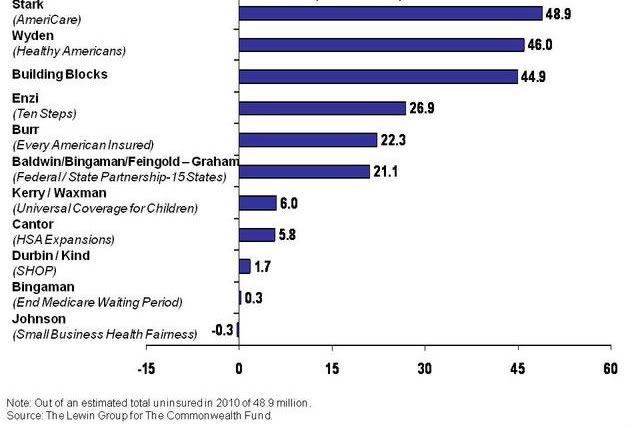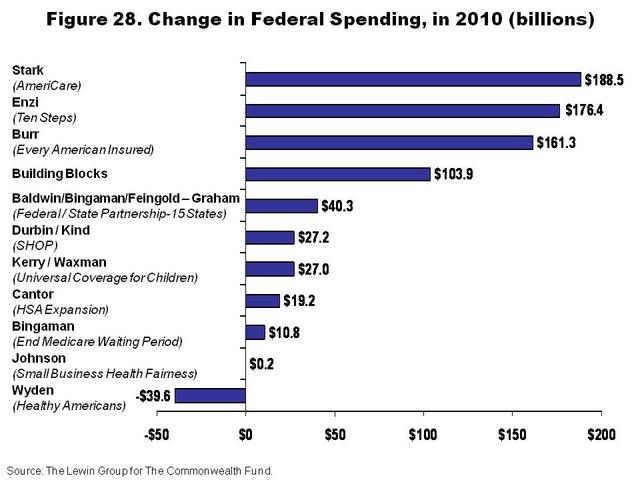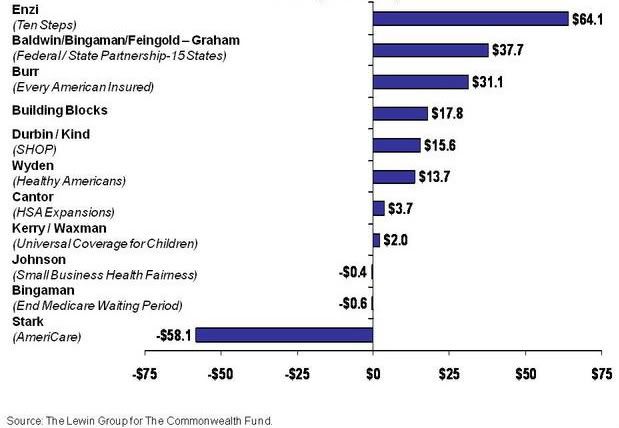From PNHP, Dr. Margaret Flowers has an important, wonky, yet highly readable analysis analysis of much that is wrong with the Republican Ryan plan to privatize Medicare and flatline Medicaid; and of course PNHP's Don McCanne has been all over it.
And former health insurance company executive turned whistleblower Wendell Potter has a great explanation of the role the insurance companies are playing in the ongoing marketing the Republican Ryan plan to take more of your taxpayer and premium dollar for less and less benefit.
And certainly, those interested in ongoing polite mainstream critiques of the insane and evil Republican Ryan plan can look to Ezra Klein and Jonathan Cohn.
But as you may have noticed, I am too angry, and stakes are too high, to be polite.
Once again, back to basics:
Nobody can make a profit insuring sick people.
All else follow from this:
Look folks, there is nothing new here:
Serious economists have known (.pdf) since Nobel-prize winning Kenneth Arrow’s seminal work (.pdf) in the early-1960s, that health care economics is fundamentally different from simplistic widget-manufacturing selling economics. Healthcare insurance and systems do NOT follow simplistic supply-demand-competition:
1. Patients cannot comparison shop and use that to drive prices down (they do not have the knowledge, power, control, flexibility or choice).
2. Insurance companies do not compete by increasing efficiency or quality or driving prices down competing with each other… there only meaningful competition is avoiding paying for sick people, by either scheming to not cover them or to deny their coverage if they slip in. They only make money by not providing care. Avoiding adverse selection in their overall pool is the only significant macro competition they engage in; avoiding paying out the only micro level efficiency they engage in.
But of course, politicians and policy wonks interested in the way the real world works have had additional proof for over 10 years that privatizing does not result in competition lowering costs for over 10 years. We know this from what in just its latest incarnation is known Medicare Advantage (and similar attempts with partially privatized Medicaid managed care). Then as now, they initially sold it (during the Clinton years I might add) as the free market fundamentalist miracle of how the private sector, and competition, and efficiency would result in cost saving. Initially it was to cost nothing extra. Of course having sold it on that lie initially, they have to come back repeatedly saying they needed more and more extra money. And so we learned that, duh, bringing in an added layer of private insurance to the Medicare and Medicaid just adds up to 15% in costs.
The Republican plan to push more of your money, tax dollars and premiums and out-of-pocket costs to the insurance companies is same as it ever was. Before today’s “Ryan Plan,” the previous Republican "health reform" plans amounted to the same thing. Back in 2009, the Commonwealth Fund, with analysis by the Lewin Group, released the only half-decent report comparing true costs (i.e. total system costs such as percent of GNP spending, including individual out-pocket, state and local government, and employer/business costs; not just the federal government costs) and benefits of various health reform proposals. In addition to the idealized version of Hacker/Obama/Baucus that we never got (e.g., with public option), and Peter Stark’s “late” version of single payer, they also looked at what were then the Republican standard-bearer plans from Mike Enzi Richard Burr. And guess what. The Republican plans covered far less people, at higher total cost and higher taxpayer cost, by giving more money to the insurance companies.
Number of Uninsured Who Would Become Newly Covered (48.9=100%)

Change in Spending just of the Federal Government

Total Change in National Expenditures on Health Care

This was the same nonsense that was at the heart of the McCain presidential campaign health proposal. This is what Republicans do. Nothing new in "Ryan’s plan.”
It is worth noting that, once again, “mainstream” (aka: conservative/neoliberal) Democratic plan that we got (call it Obama-Baucus) of forced mandate to buy insurance product from private companies, with tax-paid premium supports for those of medium low income and unable to pay for the mandated private insurance on their own, is a version of the same thing.
Indeed, this is all just another example of Naomi Klein’s Shock Doctrine wherein the plutocrats create the disaster, then use the commonweal to further profit by it. It is not enough that they want to further increase their wealth and incomes, and reduce their taxes, and defund programs for the rest of us, they insist on siphoning off more of your money and our tax dollar into their pockets.
But as Wendell Potter warns us from his perch at Center for Public Integrity, do not think that this is somehow a Republican ideologically driven suicide plan. This is just the latest salvo in an ongoing, well funded, behind the scenes well orchestrated plan to sell this evil and homicidal (to the tens of thousands of folks who will die due to lack of care) plan.
[snip]
Ryan et al would never propose such a fundamental reshaping of those programs unless they were confident that corporate America stands ready to help them sell their ideas to the public. Like big business CEOs, Congressional Republicans wouldn’t think of rolling out Ryan’s budget plan without a carefully crafted political and communications strategy and the assurance that adequate funding would be available to carry it out.
Republicans know they can rely on health insurance companies—which would attract trillions of taxpayer dollars if Ryan’s dream comes true — to help bankroll a massive campaign to sell the privatization of Medicare to the public.
[snip]
The industry’s pollster, Bill McInturff of Public Opinion Strategies, told insurance company executives, who had assembled to begin planning a campaign to shape the health care reform debate, that Americans were rapidly losing confidence in the private health insurance market.
For the first time ever, he said, more than 50 percent of Americans believed that the government should do more to solve the many problems that plagued the U.S. health care system. In fact, he said, a fast-growing percentage of Americans were embracing the idea of a government run “Medicare-for-All” type program to replace private insurers.
[snip]
The executives came to realize at the meeting that the industry’s very survival was dependent upon the successful execution of a comprehensive campaign to change public attitudes toward private insurers. They needed to convince Americans they “added value” to the health care system, and that what the public should fear would be more government control.
Knowing that a campaign publicly identified with the industry would have little credibility, the executives endorsed a strategy that would use their business and political allies — and front groups — as messengers.
The industry knew it had to enlist the support of longtime allies such as the U.S. Chamber of Commerce, the National Federation of Independent Business and the National Association of Health Underwriters to repeat the term “government takeover” like a mantra. It also had to get conservative talk show hosts, pundits and politicians to play along. And play along they did. In the debate preceding one key House vote involving a public option, a parade of Republicans took to the floor to repeat the industry’s favorite term: government takeover.
[snip]
While they were leading the effort to torpedo the public option, the insurers were lobbying hard for a provision in the bill requiring all of us to buy coverage from them if we are not eligible for a public program like Medicare or Medicaid. They won that round, too. That provision alone will guarantee billions of dollars in revenue the insurers would never have seen had it not been for the bill the president signed.
But even that is not enough for the insurers. For many years, they’ve lobbied quietly for privatization of Medicare, with significant success. They were behind the change in the Medicare program in the 1980s that allowed insurers to offer what are now called “Medicare Advantage” plans. The federal government not only pays private insurers to market these plans, it pays them an 11 percent bonus. That’s right: people enrolled in Medicare Advantage plans cost the taxpayers 11 percent more than people enrolled in the basic Medicare program.
[snip]
Rest assured that insurers have promised Ryan and his colleagues a massive industry-financed PR and advertising campaign to support his proposed corporate takeover of Medicare. If Democratic strategists really believe that Ryan has all but guaranteed the GOP’s demise by proposing to shred the social safety net for some of our most vulnerable citizens, they will soon be rudely disabused of that notion. The insurers and their allies have demonstrated time and again that they can persuade Americans to think and act — and vote — against their own best interests.
Click here to learn more about Single Payer Improved and Expanded Medicare for All.
Peace & Health


